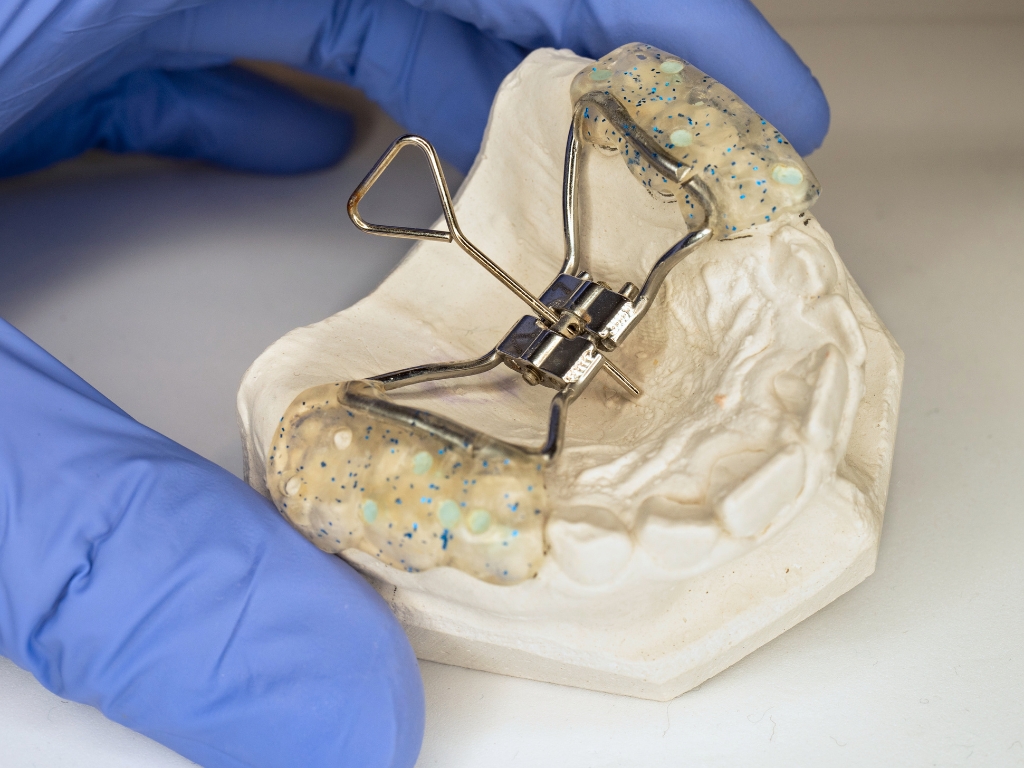Palate Expander: How It Works and Who Needs One
When it comes to orthodontic treatment for children and teens, one common tool used to help develop a healthy smile is a palate expander. This device may sound intimidating at first, but it’s actually a safe, effective way to guide jaw growth and create room for teeth to align properly.
Here’s everything you need to know about palate expanders, including how they work, what types exist, and who they’re right for. For additional insight, check out this helpful overview from Cleveland Clinic.
What Is a Palate Expander?
A palate expander is an orthodontic appliance designed to gradually widen the upper jaw (also known as the maxilla). The goal is to correct issues caused by a narrow palate, such as:
- Dental crowding
- Crossbites (when the upper teeth bite inside the lower teeth)
- Impacted teeth
- Mild breathing problems like snoring or sleep apnea
Palate expanders create more space in the mouth, allowing teeth to erupt naturally and align more easily, often preventing the need for extractions later.
Benefits of a Palate Expander
Palate expanders are popular in pediatric orthodontics because they offer several benefits:
- Creates space for crowded or blocked-out teeth
- Corrects crossbites and improves bite alignment
- Supports facial growth and jaw development
- May improve breathing, reduce snoring, or help with mild sleep apnea
- Prevents extractions or more complex treatment in the future
They are simple devices with a major impact on long-term oral health.
How Does a Palate Expander Work?
The upper jaw develops in two halves that don’t fully fuse until a child’s mid-to-late teens. A palate expander uses gentle, steady pressure to separate the two halves and stimulate new bone growth in the gap.
Most expanders have a small screw in the center. A parent or caregiver turns the screw daily to incrementally widen the appliance. Over the course of several weeks, the upper jaw expands and creates the space needed for proper alignment.
Types of Palate Expanders
There are several different palate expanders, and your orthodontist will choose one based on age, needs, and comfort:
- Fixed Palate Expander: Cemented to the molars and stays in place throughout treatment.
- Removable Palate Expander: Can be taken out for cleaning or eating but requires strong compliance.
- Rapid Palatal Expander (RPE): Widens the jaw quickly over a few weeks.
- Surgically Assisted Rapid Palatal Expander (SARPE): Used for adults or older teens whose bones have fused; requires minor surgery before activation.
How Long Do You Need to Wear a Palate Expander?
Treatment usually lasts 3 to 6 months. The active expansion phase only takes a few weeks, but the appliance remains in place afterward to stabilize the new bone.
Mild pressure or discomfort is normal when the screw is turned, but it typically fades quickly and doesn’t interfere with daily activities.
Keep Growing Smiles on Track
Palate expanders are a proactive and effective tool in early orthodontic care. By guiding jaw growth and making room for teeth to align naturally, they can set the stage for smoother, faster future treatment.
If your child is in the ideal age range or showing signs of crowding or bite issues, it might be time to explore early intervention.
Contact Outstanding Orthodontics to schedule a free consultation and learn if a palate expander is the right step for your child’s smile.
FAQs
What’s the right age for a palate expander?
Expanders tend to work best while a child’s jaw is still developing — usually somewhere between ages 7 and 14. At this stage, we can guide natural growth more easily and make room for the permanent teeth to come in just right.
Does a palate expander hurt?
Most kids describe it as pressure rather than pain. The feeling usually fades within a few minutes after the screw is turned. After a few days, it becomes part of their normal routine.
How often do I need to turn the expander?
Every patient’s plan is a little different, but most expanders are turned once a day. Before you leave our office, we’ll walk you through exactly how to do it and make sure you feel comfortable handling it at home.
How long does treatment take?
The active phase — when the jaw is actually widening — usually lasts just a few weeks. However, the expander stays in for about three to six months to allow new bone to stabilize and hold its shape.
Why did a small gap appear between my child’s front teeth?
That’s actually a great sign! It means the expander is doing its job. The space often closes naturally over time or during the next stage of orthodontic treatment.
How do we keep the expander clean?
Brush around the expander carefully after meals, making sure to reach all the corners and edges. Rinsing with water or mouthwash helps too — and a water flosser can be a big help for those tricky spots.
What can my child eat with an expander?
They can eat most foods, but it’s best to skip sticky candies, hard nuts, or crunchy snacks that might damage the appliance. Softer foods are easier at first while they’re getting used to it.
Does every child need a palate expander?
No, expanders are only used when they’re truly needed — usually for issues like crowding, crossbites, or a narrow upper jaw. We’ll let you know during your visit whether it’s the right option for your child.
What happens once the expander is removed?
After expansion, your orthodontist may recommend braces or another treatment phase to fine-tune alignment. The expander simply sets the foundation for a balanced, healthy smile.
How do I know if my child might need one?
You might notice things like crowding, mouth breathing, or an uneven bite. The best next step is to schedule a free consultation — we’ll take a closer look and walk you through the options in simple terms.





